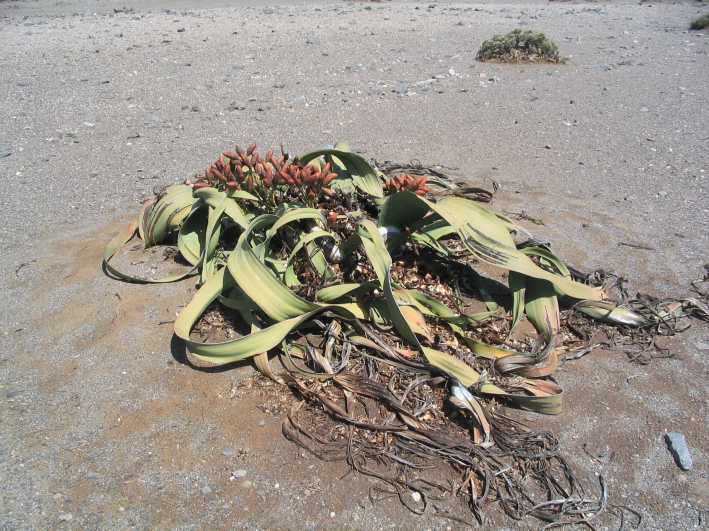Welwitschia is a fascinating plant that can not only survive for several thousands of years, but it can do so in one of the most inhospitable environments on the planet, the Namib Desert.
Named after Austrian botanist Friedrich Welwitsch, who discovered it in Angola in 1859, Welwitschia is actually called ‘tweeblaarkanniedood’ in Afrikaans, which translates to “two leaves that cannot die”. That’s a surprisingly accurate name for a plant that grows only two leaves and can survive thousands of years in the world’s oldest desert. Some parts of the Namib Desert receive less than two inches of precipitation a year, but that’s apparently all Welwitschia needs to survive, thanks to its extremely “efficient, low-cost genome”.

Photo: Muriel Gottrob/Wikimedia Commons
It may not be the most attractive plant in the world – it’s just two fibrous leaves that become shredded and curled over time – but the capacity of Welwitschia to endure has always fascinated scientists. Some of the oldest specimens in the world date back 3,000 years, to the beginning of the Iron Age, and most plants routinely live for over 1,000 years.
A recent study that analyzed the genome of the Welwitschia plant in order to shed some light on how it manages to thrive in the Namib Desert found that the plant adapted to these harsh conditions over millions of years, as its genome suffered important changes.
About 86 million years ago, during a time of increased aridity and prolonged drought, a cell division error caused the entire Welwitschia genome to double. And although duplicated genes are usually deprived of their functions and available to take up new ones, a bigger genome also means more intensive energy consumption. That’s not ideal in an environment where energy sources are so scarce.
Scientists also found that a large part of Welwitschia’s genome is “junk” self-replicating DNA sequences called retrotransposons. However, about two million years ago, a genetic change caused all these junk DNA sequences to be silenced through a process called DNA methylation. It was this and other small genetic “tweaks” that turned the plant into the low-cost organism it is today.
“When we see that the plant is able to live in this environment for so long and preserve its DNA and its proteins, I really feel like we can find hints for how to maybe improve agriculture,” plant biologist, Dr. James H. Leebens-Mack told the New York Times.
Welwitschia is essentially a 100-million-year plant fossil that managed to adapt and thrive in one of the most inhospitable places on Earth. It may not be much to look at, but its resilience and the secret it holds are definitely things to be admire.












